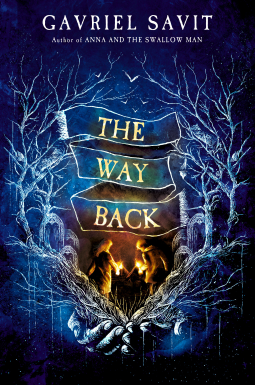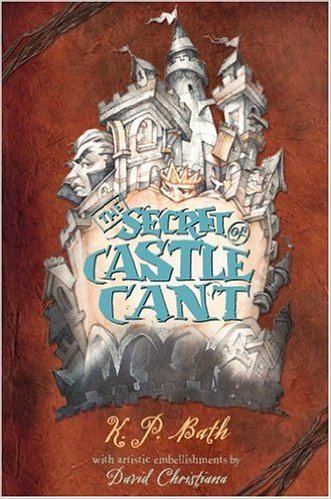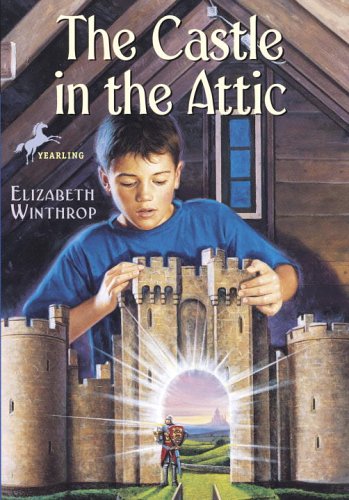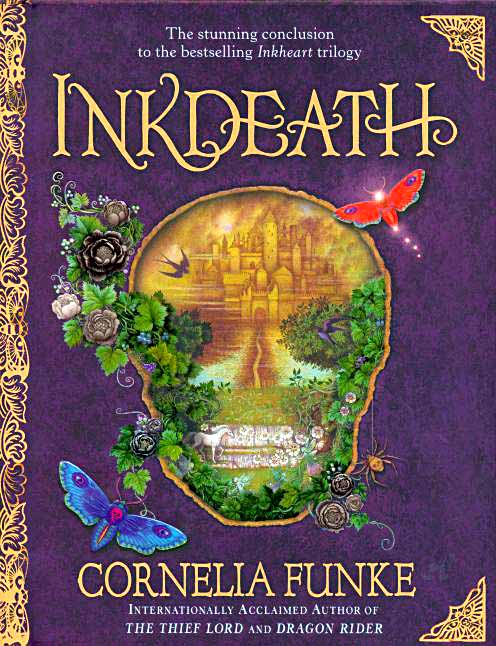 When young Yehuda Leib and Bluma meet the Angel of Death in their otherwise sleepy 19th-century village, the two begin a journey beyond the limits of the mortal world. The demons of Jewish folklore manifest before their eyes as they travel through the supernatural realm. Author Gavriel Savit returns with The Way Back, his follow-up to the New York Times bestseller Anna and the Swallow Man. This historical fantasy ran my imagination wild with frightening images of demons set against a bleak winter landscape.
When young Yehuda Leib and Bluma meet the Angel of Death in their otherwise sleepy 19th-century village, the two begin a journey beyond the limits of the mortal world. The demons of Jewish folklore manifest before their eyes as they travel through the supernatural realm. Author Gavriel Savit returns with The Way Back, his follow-up to the New York Times bestseller Anna and the Swallow Man. This historical fantasy ran my imagination wild with frightening images of demons set against a bleak winter landscape.
The first chapters of The Way Back introduce the main characters: two young residents of the shtetl Tupik. I found these characters recognizable and easy to love. Yehuda Leib is a troublemaker by nature, who has a keen eye for all that happens in his small hometown. He longs sharply for a father figure he vaguely remembers, a mysterious figure whose identity is hidden from Yehuda Leib by his mother. Bluma, the baker’s daughter, is fleshed out through her caring nature toward her bubbe. Both children are introduced to the Angel of Death early in the story, and the sting of loss propels them on their quests. While Yehuda Leib runs towards Death, determined to retrieve his father’s soul, Bluma runs from this powerful spirit after accidentally picking up its most precious tool. This is only the beginning for our protagonists.
I started The Way Back as October began, and what a perfect way to set the tone for the Halloween season. Demons are virtually everywhere in this story. Both children soon find themselves in a land of spirits called the Far Country. Here, demons and the Army of the Dead reside. I recognized a few of these demons from my Catholic upbringing, but I found myself wishing I was more versed in Jewish folklore. I feel I missed a lot of references and familiar archetypes of characters. However, this book inspired some intriguing Google searches and questions for my roommate. Those who are knowledgeable of the mythology and folklore of the Jewish culture will savor this book.
Yehuda Leib and Bluma’s stories navigate the heavy themes of grief and loss with heartfelt grace. Many meditations on death show up in the context of these characters’ challenges towards the Angel of Death. To me, the wild adventure these two embark on symbolizes the phases of grief and how they can show up uniquely for everyone experiencing the pain of loss. While this pain is palpable throughout the story, so is a sense of hope. Yehuda Leib and Bluma become like brother and sister throughout their dangerous journey, and the two are connected through the destruction and regrowth they experience. This coming-of-age story allowed me to think of how I processed grief as a child. While this book is listed as appropriate for ages 12 and up, I think the story will appeal to a more mature group of young people who can connect more with the serious themes.
The Way Back is ambitious in the scope of its worldbuilding. As the action kicked in, I felt a little whiplash in the twists and turns. The limited third-person perspective jumps from character to character, and at times in their disorientation, I felt disoriented myself. Some mysteries unraveled themselves too quickly for my liking in these pages, and there are some minor characters whom I wished had a little more development.
Overall, I enjoyed the genuine fright this book brought me. I was intrigued by reviews that came before this one that compared The Way Back to works by Neil Gaiman and Philip Pullman, two authors whose work I devoured as a young reader. These comparisons did not disappoint! In fact, I was so spooked within the first few chapters that I found myself needing to turn on the lights in my bedroom during one sleepless night spent reading. If you’re looking for a creepy, supernatural tale you can fully immerse yourself in, look no further than The Way Back.
A copy of this book was provided by the publisher for review.



